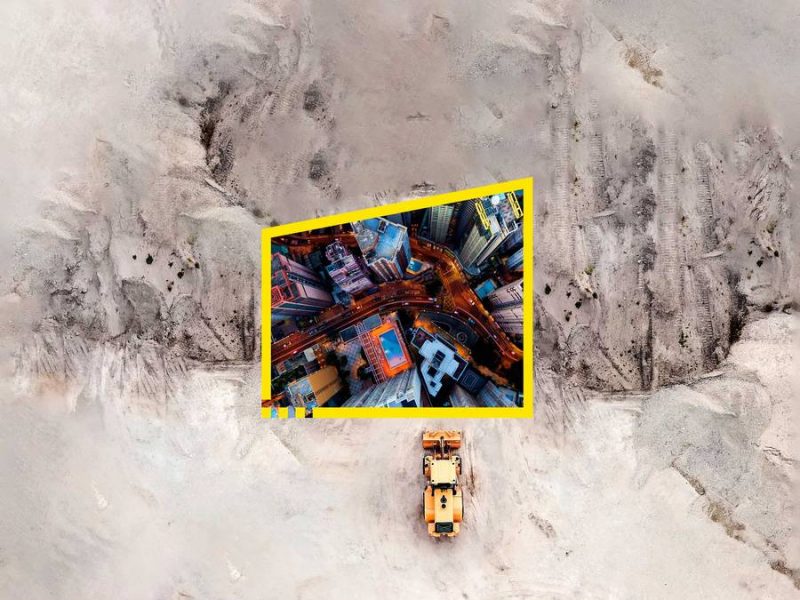
Top 3 enterprise tech trends to watch in 2020
If blockchain felt more like hype than reality in 2019, prepare for that to change. Industry watchers expect 2020 to be the year the distributed ledger technology matures and we see use cases that go beyond cryptocurrency.
Areas where experts envision growth include data security, the supply chain and electronic health records.
“Someone’s gonna hit me, but I think blockchain as it relates to data security (think access management) is going to have some landmark use cases in 2020,” Siobhan Climer, science and technology writer at Mindsight, said during a recent IDG TECH(talk) Twitter chat.
Ed Featherston, a technologist at Cloud Technology Partners whose expertise includes blockchain, big data, machine learning, IoT and cloud computing, agreed, saying he still believes in the potential of blockchain and predicts its use will grow in 2020.
“One of the biggest areas in which blockchain is growing is supply chain and provenance,” he said during the Twitter chat. “Pharma (and healthcare in general) are also looking and investing heavily in blockchain options: drug supply chain — opiates especially — clinical trial data, electronic health records. Chain of custody/chain of events is always a potential use.”
Climer concurred: “Anything that involves tracking of a noun – person (law enforcement/government/travel), things (medicine, products, packages), ideas (patents, perhaps) – so much potential there.”
In writing about the expectations for blockchain in 2020, Computerworld’s Lucas Mearian said that while the technology “has not lived up to expectations to drive new societal and business models” – and most projects remain in experimental mode – it is far from being a failure.
“Its promise to deliver a single version of data truth over a secure, distributed and immutable ledger remains compelling, and as it matures, many see it becoming a ubiquitous platform for financial services, ecommerce and other markets,” he wrote.
As blockchain begins climbing out of the hype cycle, pragmatic use cases will arise. Some of those include payment processing, data sharing, equity trading, and contract/document keeping and tracking, Mearian wrote. We can also expect the technology to be used to thwart fake news, for digital securities exchanges, and to manage consumer identities.
More AI and machine learning
Artificial intelligence (AI) and machine learning (ML) will be used more in 2020, experts say. In particular, they’re looking forward to their use in cybersecurity, collaboration technology and telepresence, and production quality.
“I am excited to see AI and ML being used more fully in the world of cyber. Much of this will initially be offered as a services,” said Schott Schober, a cybersecurity and wireless expert and author of the book Cybersecurity Is Everybody’s Business, during the IDG TECH(talk) Twitter chat.
In fact, a recent Computerworld poll about technology trends for 2020 found 43.9% of people are most looking forward to AI-enhanced cybersecurity. It’s no wonder, considering increases in the number of cybersecurity incidents. In 2019, at least 5.3 billion records, including credit card numbers, home addresses and phone numbers, were exposed through data breaches. Organizations need help identifying threats and preventing breaches, and given the shortage of cybersecurity professionals, AI can help them bridge that skills gap.
Look for AI and ML to be used to detect threats and other potentially malicious attacks and for AI to be used with multi-factor authentication (MFA) to provide access to users, Schober said. ML is also effective for learning/analyzing mobile endpoints.
For Steven Prentice, whose expertise includes implementing business technology across a range of industries, it’s the use of AI and ML in collaboration technology and telepresence that has him most excited.
Using AI and ML in enhanced meeting/collaboration management allows you to calculate floor space needed for meetings, as well as “power usage and general viability in brick-and-mortar spaces. It serves as a catalyst for justifying robots and telepresence,” he said.
IoT, IIoT, edge computing and automation rise in importance
Expect the internet of things (IoT) and industrial internet of things (IIoT) to grow in 2020. And as they do, edge computing and robotic process automation (RPA) will gain traction, said Moin Shaikh, senior web analyst at Intelligent Online Solutions Pty. Ltd.
“OEMs and manufacturers have started harnessing the power of RPA and AI to improve product quality and fasten production cycle,” he said. “Logistics is another area where IIoT robotics are helping.”
Those applications are going to need the fast network speeds that edge computing provides to process the zettabytes of data the IoT devices are going generate.
“Edge can reduce latency for critical applications, for example, and improve the speed of alerts while easing network loads,” Sandra Gittlen wrote in her Network World article, Enterprises tap edge computing for IoT analytics.
Enterprises are already investing in compute, storage and networking gear at the edge, including IoT gateways and hyperconverged infrastructure. And in 2020, Joanne Friedman, IT industry analyst and CEO of ConneKted Minds, expects more will do so, – writes computerworld.
“I’m looking forward to enterprises adopting edge as a means to absorb real-time/situational or contextual data from cobotics, IIoT, or customers (IoT) to improve the accuracy and quality of insights used to inform their decisions,” she said.
Other enterprise tech trends for 2020
Industry experts are also watching these enterprise technology trends:
- 3D printing advances;
- Organizations focused on agile and a DevOps culture;
- Higher adoption of low-code and no-code solutions;
- Entire organizations – not just IT – focusing on reducing technical debt and legacy debt;
- Improved IoT security;
- Privacy by design and security built into products/software.






